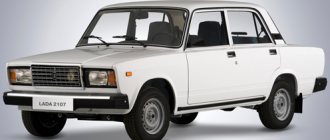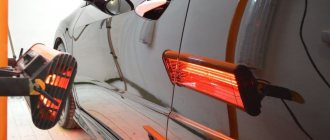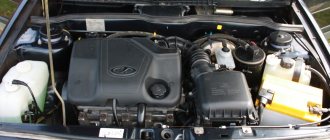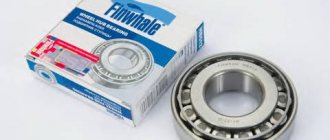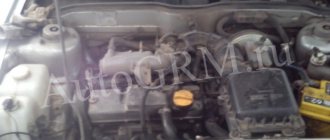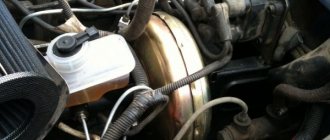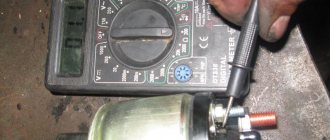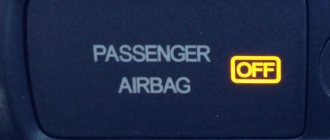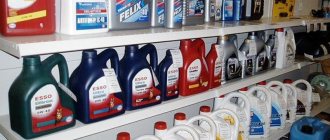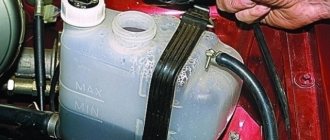How long does it take to break in new rings?
Well, the time has come to replace the rings, as well as the valves, mileage over 200 thousand, oil from max to min. fell quickly, over 1000 km (then it almost stood still, but there is already a little gasoline in the oil, etc., so it seems that the level does not decrease, and there is gasoline + oil + carbon deposits instead of oil), when warmed up, unevenness was felt work (slight floating vibration, as if the speed is floating). The compression also had a range: 1 - 12, 2 - 11.2, 3 - 12, 4 - 10.3
(in reality, most likely even lower, because the oil ate well - it was most likely oil compression in some cylinders, and these values are overestimated).
It was decided to change the rings and rebuild the cylinder head - valves + guides + caps. After disassembly, it was discovered that there were 2 pistons repaired, 82.8 mm (the square was knocked out), the cylinders were free of scuffing and everything was very tight, it didn’t move anywhere, the rings weren’t visible if you looked from above. All pistons + combustion chambers + ring grooves on the piston were covered in a heavy layer of carbon deposits. washed with Sanita anti-grease gel (smear it on for 20 minutes and wash it off, and so on several times), the grooves for the rings were cleaned down to metal with fragments of old rings. All the rings were on the verge of falling, heavily worn (by eye the thickness of the new and old ones was significantly different). All new rings had to be ground down with a needle file, because... the gap was less than 0.25mm at the joint when installed in the cylinder. The piston with new rings did not fit into the 3rd cylinder - a belt of rust formed on top where the rings do not go, which was carefully sanded and lubricated with oil, and only after that it was possible to drive the 3rd piston.
After reassembling the cylinder head (replacing valves, guides, cutting in seats, lapping (crappy, as it turned out),
trimming of exhaust valves, because
the saddles are not the first freshness (the old ones were also trimmed), after assembly the compression showed only: without oil: 1 - 7 2 - 8.7 3 - 5.9 4 - 7.5 with oil: 1 - 8 2 - 9, 8 3 — 6.4 4 — 9.3
From which the conclusion was drawn that the grinding was bad, because
compression with oil did not rise much anywhere, and the leaking valves do not allow it to rise, which was confirmed after disassembling and pouring kerosene into the channels, everything was leaking
)).
Be sure to check the valves with kerosene, or for even scratches on the seat chamfer around the entire circle,
because
the valve is completely rubbing in, but the seat may not be rubbing in yet and it will be a bummer
.
If the valves get a little wet (do not leak), especially if this does not happen immediately, then this is normal lapping, otherwise some comrades think that the valves should be left with kerosene for days, but the valve is not a pipeline
, and the compression stroke there lasts tenths/hundredths split seconds, so
don’t rub until you’re fanatical, just sag the saddles.
.
After assembly with standard ground-in valves, the compression became:
:
1 - 9.5 2 - 10.5 3 - 7.7 - with oil 10.6 (unpolished rings where the belt was slightly sanded) 4 - 9.7
After 10 km!:
Started the car, drove only >10 km Price tag: 6,000 ₽ Mileage: 207000 km
Good afternoon. The engine began to actively take oil. I decided to change the rings. After opening it, it turned out that the decision was correct - the rings were indeed a pipe. But after replacing the rings, oil consumption increased even more. I've already driven 600 km, and oil is flying into the pipe. They explained to me that I need to wait 1500-2000 km until the rings wear in, and during this time fill in 15W40 mineral oil.
I would like to hear the public's opinion on this issue. Thank you.
Replacing piston rings is a procedure that will have to be encountered if the driver has been using the car for a long time. On average, the service life of the rings is 80-120 thousand kilometers, depending on the driving style, as well as the quality of the rings themselves and the assembly of the car engine.
After replacing the piston rings, many drivers forget about the need to break in the car. This is an extremely important procedure that should not be neglected if you want to ensure that engine repair and piston ring replacement are not in vain. In this article we will look at how to break in a car engine after replacing the piston rings.
#1 Pepper
- Group: FB Veterans
- Posts: 293
- Registration: 22 September 07
In my case, replacing the rings (compression + valve stem seals) and valve stem seals. It seems like it wouldn’t hurt to give the little guy a run-in? The question is: how many kilometers can you drive in the “vomit-fry-fry-vomit-fry” mode?
- Up of the page up there ^
#2 Lonely Wolf
- Group: Members
- Posts: 49
- Registration: 28 September 09
- Up of the page up there ^
#3 Shell-68
- Group: FB Veterans
- Posts: 4,864
- Registration: 08 April 08
- Up of the page up there ^
#4 Lonely Wolf
- Group: Members
- Posts: 49
- Registration: 28 September 09
- Up of the page up there ^
#5 joni
- Group: FB Veterans
- Posts: 2,120
- Registration: 20 July 07
- Up of the page up there ^
#6 ODAN
- Group: Members
- Posts: 191
- Registration: 28 January 10
Lonely Wolf (22.3.2010, 20:06) wrote:
- Up of the page up there ^
#7 Lonely Wolf
- Group: Members
- Posts: 49
- Registration: 28 September 09
ODAN (22.3.2010, 23:08) wrote:
- Up of the page up there ^
#8 Pepper
- Group: FB Veterans
- Posts: 293
- Registration: 22 September 07
funny..About the hoods.. Perhaps everything there from the factory comes with such tolerances that you really need to fuck it up if something falls off right away.. This option doesn’t work for me.. The replacement process is too gimmicky (rings take a long time to get to Russia)
I'm still waiting for adequate advice. Vomiting, I don’t know how much, and then frying it is not a break-in and I’m fucked, sorry.. In general, there are probably no questions with the break-in mode. Question about mileage...
Why does the engine eat oil?
Sometimes, after replacing the oil scraper rings, grease continues to be wasted unnecessarily. In this case, the reason is probably not only in the rings. This usually happens when there are problems with valve stem seals.
This part can be found on the valves. They remove excess lubricant from them and prevent it from entering the combustion chamber. It is recommended to immediately replace the caps during any engine overhaul so as not to disassemble the engine twice.
Conclusion
. Sooner or later the engine has to be repaired. In this case, running in the engine after replacing the piston rings is simply necessary. This work must be done correctly in order to significantly increase the service life of the repaired unit.
Types of engine break-in
The further operation of the vehicle depends on correctly performed running-in. Depending on the situation, running-in can be of several types:
- After partial engine overhaul;
- After major renovation;
- After replacing components.
After a major overhaul of the engine, running-in is carried out in order to grind in all engine components. It is better to carry out such running-in at a service center where special equipment is available. As for other cases, the running-in must be performed directly on the road, that is, while the car is moving.
How to perform break-in after replacing piston rings?
Before running in, the car must be prepared. To do this, perform the following steps:
- Infects a car battery;
- Before leaving on the road, start the engine and warm it up to 80 degrees;
- After warming up, the engine is turned off and cooled to 40 degrees;
- Next, warm up again to 80 degrees and repeat the procedure at least 8 times;
- After preparation, inspect the machine and unit for faults;
- They drive onto a highway with little traffic and no bumps.
Basically, the rules for engine break-in are described in the technical operation book. Before you break in the engine yourself, be sure to read the manufacturer's recommendations.
How to break in the engine after replacing the piston rings will be discussed in detail using the Priora as an example in this video:
Why is lapping important?
It’s worth noting right away that any motorcycle needs running-in, regardless of the year of manufacture. It allows you to tighten threaded connections, cables, gaskets, reduce friction between components and eliminate micro-irregularities.
For example, if the running-in of a scooter after replacing the piston was carried out incorrectly, fuel consumption will increase, the rings will quickly wear out, the motor will begin to overheat, and the dynamics and power of the device will decrease. Therefore, experienced riders do not recommend ignoring the procedure, because the consequences will be unpleasant.
Changing the oil after engine overhaul
It should be understood that the obligatory result of grinding in parts (especially in the first hundreds of kilometers) in the engine is metal shavings. These chips enter the engine oil and accumulate in the oil filter. It is quite obvious that these chips need to be removed from the internal combustion engine.
This can be done by draining the lubricant and replacing the filter. This replacement needs to be done after 800-1000 km. By the way, you only need to fill it with suitable high-quality motor oil immediately after repairing the engine, before the first start, during the first replacement and further during operation.
Initial engine start
The initial start-up of the internal combustion engine after a major overhaul is as important as its assembly. Inaccuracies and errors will lead to the most serious consequences. Therefore, the success of running in a repaired engine largely depends on the driver’s accurate implementation of the recommended actions.
Sequence of actions when starting the engine for the first time:
- Fill in high-quality motor oil that meets the manufacturer's recommendations. It is recommended to fill in two stages: first to the Max mark, wait a few minutes, top up after the first part of the engine oil has partially drained into the sump. Topping must be done below the maximum mark.
- Check the condition of the battery. Overcoming problems with microscopic irregularities when cranking the crankshaft will depend on the charge level.
- Manually pump up diesel fuel when starting a diesel engine.
- Proceed to start the engine after completing all the specified steps. Pay attention to the time that the engine oil pressure lamp lights up. When first started, the lamp burn time exceeds the standard mode by several seconds. However, the engine must be turned off immediately in cases where the lamp does not go out. The reason is usually that the normal engine oil pressure has not been achieved.
- Do not use the gas pedal when starting the power unit for the first time to avoid increasing the load. Instead of the accelerator, you must use the clutch pedal.
- With the oil pressure lamp extinguished, the engine is heated to a temperature in the range from 85° to 92°C. Note:
when starting the internal combustion engine for the first time after a major overhaul, the applied lubricant begins to burn out and a burning smell appears. It is recommended to pay attention to the oil pressure after the engine reaches operating temperature. A slight decrease in pressure is allowed due to an increase in the temperature of the oil, which will be more liquid in this operating mode. If the pressure drops below 0.4 kg/cm², you need to look for the cause of the problem. It is possible that errors were made when assembling the internal combustion engine or low-quality oil was poured. - Then the engine is turned off and restarted after the temperature drops to 40°C. It is recommended to perform about 15 starts and then stop.
- Run-in should be continued at higher speeds, raising them from 1000 to 1500, then to 2000 rpm. In each mode, the engine should run for 3-5 minutes.
Features of removal and installation
First rule. When performing work, it is imperative to maintain cleanliness. Before dismantling the power unit, you should go to the car wash and remove all remaining dried dirt and dust using a high-pressure washer. Using a special cleaning agent, the engine housing is washed. You cannot wash a hot engine, since a sudden temperature change has a negative effect on the engine. Be sure to disconnect the battery. As soon as the body is processed, you need to wait a while until the motor dries out. Using compressed air from the compressor, remove all drops of water, and also treat the wire connections.
Second rule. Keep track of how the parts were before disassembly. It is best to use a digital camera or a smartphone with a good camera. Use your camera to take step-by-step photographs of the parts being disassembled.
Disassembly
First you need to dismantle the power unit. It is noteworthy that in some scooter models - for example, Honda Dio before 1994, you can completely replace the piston without removing the entire engine. Disassembly order:
- Unscrew and remove all parts that interfere with dismantling - throttle cables, rear brake cables, fuel and oil supply hoses, electrical blocks, shock absorber, and so on.
- In most models, the engine is secured with just one bolt to the frame. Unscrew it and roll out the engine.
- Remove the muffler, air filter, cylinder and generator casing. Using a compressor and brush, completely remove any dust from the cylinder. If necessary, wash the cylinder again. The part must be perfectly clean.
- Unscrew the spark plug and unscrew the nuts/bolts that secure the cylinder head. Before performing work, be sure to wash all the places where the crankcase is connected to the cylinder. Even if the engine was washed anyway, there will always be sand and dirt under the fins. When removing the cylinder, residual dirt may penetrate inside the crank chamber.
- Unscrew the head and then proceed to dismantle the cylinder. In some cases, it happens that the cylinder is stuck and does not want to be removed easily. Here you need to pick it up using a pry bar. If you find that the cylinder gaskets are coming off in chunks and are stuck to a metal surface, you should carefully and carefully remove them. It is important to achieve maximum surface evenness. If there is no replacement gasket, you need to buy a new one or a paronite sheet and cut a new gasket out of it. It also happens that during the repair process the owner damaged the aluminum gasket located between the cylinder and the crankcase. You can do it yourself and make a new gasket using a cola can. But before that you need to completely remove all traces of paint.
- A clean cloth should be placed between the crankcase walls and the connecting rod to prevent foreign objects from getting into the crankcase. If this requirement is not met, the new cylinder-piston group will most likely fail in the future, and the crankshaft will also break.
- To squeeze out the pin, you must first remove the stopper from the piston pin. Always remember that the finger fits quite tightly, so you will have to make a lot of effort to remove it. While pushing out the pin, make sure there is no lateral load on the connecting rod. Otherwise, you will have to purchase a new one, since the old part in this condition is not subject to further use. The operation must be performed so that the piston rests against an object sideways. You can support it on the wall by laying a piece of wooden beam.
- Remove the piston and get rid of the cage bearing. The old gasket should also be removed.
After completing all the work to dismantle and restore the cylinder-piston group, it is necessary to perform the installation in the reverse order.
Types of running-in
There are usually two types of running-in. They need to be distinguished. After all, correct use of this procedure can increase the resource by up to 20%. This is a very good indicator that will allow you to save on further engine maintenance.
Typically, break-in is understood as a procedure that is performed after a major overhaul of the engine. As a rule, in this case, all the main components are completely replaced, usually only the block and its head are left. In this case, you get an almost new motor. But in order for the parts to get used to each other, a thorough running-in is required. Large services use special stands for the initial procedure. This is impossible in a garage, so you just need to carefully monitor the operating mode of the engine while traveling.
Another point is a partial overhaul of the engine.
. This includes the break-in we analyze after changing the piston rings. Here you need to monitor the process a little less, but there are some nuances that simply need to be taken into account. Also, usually in this case, the mileage for grinding in is shorter, which speeds up the process. Below we will consider in more detail all the listed varieties, so you are guaranteed to avoid mistakes after repair.
First launch after major overhaul
The first 2,000 km are considered the most important here. At this time, operation should be gentle. The rules that must be followed are:
- Do not drive at very high or low speeds.
- The speed should not be constant, and the revolutions should not be the same.
- It is better to refrain from transporting trailers; it is unacceptable to transport too heavy loads.
- It is forbidden to perform sharp braking and brake the engine.
When grinding in engine parts after a major overhaul, it is unacceptable to subject it to heavy loads - the load should increase gradually. It is also extremely undesirable to force the engine to idle for a long time, naturally, excluding the warm-up mode. Idling is a serious load on the internal combustion engine.
Before driving, the engine warms up for some time. You should not be zealous here, since the power unit will reach operating temperature while driving. On the first trip after repair, it is better not to take passengers with you, so as not to create additional burden. It is better to choose the route in advance, excluding bumps and steep climbs.
You should not drive too fast - 60 km/h will be enough. Driving in high gears and under tension is unacceptable. Loads should be dosed: deceleration-acceleration. The gear must be selected correctly so that the power unit operates at medium speeds. These actions will give the piston rings the opportunity to get used to them, because even the highest quality grinding does not smooth out irregularities as much as rolling in does.
When to perform break-in after replacing piston rings
Installing new components into an engine always requires a break-in period. This applies not only to piston rings. It is well known that break-in is required after a major overhaul of the engine, or if the engine is completely new.
The break-in procedure itself implies that the components “grind in” to each other. When replacing piston rings, running-in is required so that they get used to the piston or cylinder. Despite the fact that the dimensions of the parts are standard, they wear out during operation due to a number of technological features. Accordingly, by installing new rings into an engine where old parts remain, complete size matching cannot be achieved. That is, it takes some time to break in the engine so that the parts fit together perfectly.
Tips for breaking in a two-stroke scooter:
To reduce the break-in time and the number of problems, I advise you to do this: 1. Buy synthetic oil (good, for example, Motul 2T800) 1 liter.
2. Drain the factory oil from the oil tank, pour 750 grams of synthetic oil into it.
3. We buy gasoline A95 Euro. We pour 10 liters and add 150 grams of synthetic oil. Shake thoroughly and leave for an hour to dissolve.
4. Drain the factory gasoline from the gas tank and pour in our mixture of gasoline and oil.
Methods for running in the engine
You can properly run in the assembled engine after a major overhaul using stands or during operation. At the service station, engine testing takes place in 3 stages:
The stands allow you not only to run in the engine, but also to check the quality of repairs. To do this, during the test the following is monitored:
Run-in is considered complete when the parameters reach a certain range of values and the engine is operating properly:
Let's take a closer look at how internal combustion engines are tested in service stations and in garage conditions. The methods are equally suitable for both gasoline and diesel engines.
Run-in on the stand
The stands are suitable for both cold and hot running. The equipment is an installation with an electric motor, control and measuring devices and a cardan shaft for transmitting rotation. The equipment is controlled automatically according to a given program.
The stand is selected according to the engine power. After a major overhaul, the motor is mounted on the unit, lubricant and coolant are added, and the necessary pipes and electrical connectors are connected. The test is completed by inspecting the internal combustion engine:
Cold running, unlike hot running, is performed at low speeds of the electric motor, not the motor. The test lasts 20 - 40 minutes with a gradual increase in the rotation speed of the electric motor. During the process they control:
Before installing new rings
Before you start work, you need to get everything you need. The operation will require wrenches, sockets, preferably with a ratchet, a torque wrench and a piston ring puller.
When choosing a new set at an auto parts store, you should pay attention to both the appearance of the packaging and the rings themselves.
The packaging must contain complete information about them, namely: who the manufacturer is, what they are made of, etc. The rings must also have markings indicating the top side, they themselves must not have any flaws, in addition, there must be There should be instructions that describe the correct installation of the piston rings.
If the seller claims that small defects will rub off, he is openly lying, trying to sell substandard goods, it is better to refuse such a purchase, since the money will be wasted.
Running in the engine after replacing the piston rings. Attention to detail
You may need to break in the engine after replacing the piston rings. Without this procedure, repairs will simply be useless; you will simply waste time and money. You need to understand that running in is not a whim of mechanics and engineers. This action has a practical meaning and also allows you to significantly increase the service life of the overhauled engine. If you make mistakes during the process, you can get a number of serious problems. It’s more difficult for those who run-in after self-repair. Garage motorists rarely know how to perform the procedure correctly, so situations often occur when the driver has to repeat it soon after repairs. Let's take a closer look at the features of this process, as well as how not to make mistakes when carrying it out. Running in the engine after replacing the piston rings is not a very complicated process, but you need to know how to do this work correctly. You should not listen to folk craftsmen who claim that you can do without this action. Only proper running-in will avoid problems in the future. You also need to take into account that the period and features do not depend on how much the specialist sanded off during grinding. This indicator does not affect the process.
If the engine smokes after replacing the rings
Using the Skoda Octavia 2010 as an example, we can consider the case of smoke. Even if you select original rings for the vehicle, problems may occur. Situations occur under various circumstances:
- during heavy loads;
- sudden rise;
- traction force;
- acceleration
If you look at the original Skoda rings, you can see that they were made with small holes. Some rush to turn to a turner to have the elements knocked out on a workbench - to make grooves.
In fact, it is necessary to understand the essence of the problem and inspect the rings. In ideal condition, they should be rigid and fit tightly to the cylinder.
- nozzle replacement;
- change of linings;
- checking the video.
When replacing rings, specialists often make mistakes:
- constriction;
- use of non-original spare parts;
- chain change;
- pulley clamp;
- crankshaft rotation;
- low quality tool.
If you turn to a non-professional, the driver will definitely be faced with ordinary rings, but they do not always fit in shape, and there are often problems with strength. Inexperienced specialists try to tighten the knots as much as possible. And since a regular thread is used, it is easy to tear off.
Replacing pistons yourself
It all starts with preparatory work. First you need to disconnect the battery, drain the antifreeze and engine oil from the oil pan. Then carry out the stage of qualified diagnostics. This is done in two ways: without removal and with removal of the motor unit.
To get by with little cost, only the cylinder head and pan are dismantled. Carbon deposits are removed from the top of the cylinders with a file. Following actions:
- measure the diameter between the cylinder walls with a bore gauge and compare it with the passport data;
- Make sure by turning the crankshaft that there are bores on the liners - if the condition of the liners is beyond doubt, the engine does not need to be removed;
- inspect the bottom of the pan - metal shavings in an oil film should alert you, indicating wear of the rings and liners;
- check the condition of the pistons by carefully removing them along with the connecting rods and rings - normally there should be no deep scuffs on the skirt, burnout of the bottom, or wear of the upper groove beyond the permissible value.
checking engine pistons
How to replace piston rings on an engine is described in detail below.
How to install a new piston instead of the old one?
If the damage is significant, the piston must be replaced. To do this, it should be separated from the connecting rod by removing the retaining rings from the holes in the bosses. The finger is removed using a drift.
More information on how to separate (knock out) the piston from the connecting rod:
- place the piston on two wooden blocks;
- insert a drift into the hole under the cylindrical rod on the piston;
- hit the top of the drift with a hammer several times until the finger pops out.
To install a new piston, you first need to insert your finger into it. It is also recommended to replace this element. The finger should enter the hole with little effort. If it falls out, it definitely does not fit in size. In this case, a different rod is selected for the articulated movable joint.
The pin is pressed in “hot” using a special mandrel or a homemade device with a guide bushing. It should be a few microns thicker in diameter than the hinge element. The “fixture” is assembled before inserting the pin onto the connecting rod and piston like this: first, the pin is put on the mandrel, then a drift is placed on top. The whole thing is tightened at the end of the rod with a holding screw.
It is highly advisable to carry out the fitting step before pressing. The finger is threaded into the piston hole, without a connecting rod. Then it checks how he entered. If it is uneven, then a washer is added to the device.
- clamp the connecting rod in a vice;
- Heat the inside of the connecting rod journal with a hand burner for 1.5-2 minutes;
- place the piston on top, with the arrow pointing towards the connecting rod locks - indicated by the manufacturer on the head of the element;
- insert the mandrel with the pin into the piston and connecting rod until it stops;
- Unscrew the lock, remove all excess, leaving the finger inside the piston.
pressing the piston into the connecting rod
After cooling, the piston movement is checked. Its minimal mobility will indicate that the work is being carried out correctly.
How to replace piston rings?
The oil pan must be removed. Additionally, the oil pump is also removed - it is recommended to check its condition. Next, the connecting rod caps are unscrewed, the latter are pushed upward with the pistons.
Attention! The connecting rod caps cannot be swapped. At the final stage, each is screwed to the “native” connecting rod.
Replacement of piston rings is carried out with special removable pliers. After removing the worn rings, all carbon deposits are removed from the grooves. This can be done with a piece of rigid wire or a piece of an old ring. Deposits should also be removed from the piston crowns. For convenience, the surface can be moistened with kerosene.
How long to run an engine after a major overhaul?
How long it takes to run-in after an engine overhaul depends on the test method. An incorrectly carried out test leads to jamming of the motor on the first day. To avoid breakdowns, you need to act carefully and follow the prescribed inspection regime.
On average, the grinding-in of internal combustion engine parts lasts 3000 - 8000 km. You can determine the readiness of the engine by its responsiveness and torque: after pressing the gas pedal, the car cheerfully takes off and confidently accelerates at full speed.
What to choose: contract engine or overhaul?
Instead of repairs, car owners are increasingly purchasing and installing contract engines - this is 1.5-2 times cheaper.
However, it should be remembered that such units have already exhausted part of their resource. In addition, a vehicle with a non-original engine may have certain problems when registering.
You should consider purchasing a contract power unit if engine replacement is needed very urgently, purchasing new parts is difficult due to their rarity, high cost or other reasons, and also if the engine is severely damaged and cannot be restored.
A working unit cannot be cheap, so experts do not recommend purchasing a contract engine at an attractive price.
Rules for operating a car after engine overhaul
After engine repairs, certain rules must be followed. This is due to the fact that new parts require running-in, especially in modern high-tech turbocharged units.
Such engines are made of alusil, nicosil and similar soft alloys, which is one of the reasons for their short service life - up to 100 thousand km. If car owners neglect high-quality fuel and oils, the service life of the engine may decrease further.
Lining the cylinder block helps to avoid such problems.
The key to proper engine operation is running-in: mandatory warm-up for 5-10 minutes before each trip, as well as restrictions regarding high speeds, sudden acceleration and braking, transportation of goods and towing trailers.
The running-in period is 10-15 thousand km. After this, the load on the engine gradually increases.
During the break-in period, the engine oil is changed four times: after 500, 1000, 1500 and 2000 km. This is done so that wear products formed during the running-in of new parts are removed from the system.
The full running-in is completed 10-15 thousand km after the overhaul. After this, you can switch to the recommended service interval and increase the load on the engine.
Recommendations for engine operation
The engine life depends on many factors, but in order for it to work as long as possible, you should change the oil in a timely manner, monitor its quality and the quality of the fuel, change the fuel and oil filters, do not overload the engine, and also eliminate any malfunctions in a timely manner.
The main reason for engine failure is failure to comply with the regulations for changing oil and filter elements.
Considering that in our country the quality of fuel and roads is not always the best, engine oil quickly oxidizes, and foreign particles enter the engine through clogged filters. As a result, increased wear of parts, coking of lubrication channels, etc.
Oil ceases to perform its lubricating and protective functions by 10 thousand km. mileage, so it is recommended to update even the most expensive and high-quality fluid no later than this mark.
A big problem for car owners is the presence of a large number of counterfeit products on the market. The basis of counterfeit oils bottled in canisters from well-known manufacturers is low-quality mineral raw materials.
Modern turbocharged power units especially suffer from counterfeits: the lubrication system channels become clogged, numerous scuffs appear on parts, oil starvation and jamming occur.
Step-by-step instructions for replacing rings and valve stem seals
The decarbonization process removes small deposits. In case of severe wear, a complete replacement of all piston rings and valve stem seals is required:
- The necessary parts are selected in accordance with the make of the machine. You should give preference to original spare parts so as not to bother again later.
- The spark plugs are unscrewed, the cover is removed, and then the entire cylinder head (cylinder head). The oil is drained and the oil pan is unscrewed. Next, the connecting rod caps are unscrewed and the pistons are pulled out.
- Use a puller or a screwdriver to remove the old rings. Using old pistons, the landing grooves are cleaned. It is done carefully with an unnecessary ring. Their installation should be carried out only after connecting the piston to the connecting rod.
- Of all the piston rings, the oil scraper rings are installed first. All operations must be done by hand. On box-shaped ones with a spiral spring, the expander lock rotates 180° relative to the ring lock. For composite ones, the spring is installed first, then the lower plate and the upper one. The plate locks rotate 180° relative to each other.
- After installing the remaining rings, it is necessary to evaluate the appearance of the cylinders. In case of severe wear, boring and honing are performed.
- Place the pistons in their places, screw on the connecting rod caps and the oil pan.
Valve seals also play an important role in retaining oil. They remove excess from the valves. The caps are replaced either with or without removing the cylinder head.
- In the first case, the crankshaft is turned with a wrench until the first pair of pistons is set to the top dead center (TDC) position. This is done to keep the valve from falling into the cylinder.
- The axles of the intake and exhaust rocker arms with hydraulic compensators are removed. In many models they can fall out - nylon clamps are useful for this.
- Using a special puller, you must simultaneously compress the valve springs and remove the crackers with tweezers. They are needed to compress the spring relative to the valve axis. An assistant will come in handy here.
- After removing the worn cap, install a new one in its place. It should be remembered that they are divided into inlet and outlet.
- The crackers are installed in reverse order. Next, you should rotate the crankshaft to the TDC position of the other pair of pistons. Everything is done the same way. If you replace the caps and remove the cylinder head, you can pull out the valves and assess their condition. The resulting carbon deposits must be cleaned off.
- After installing the valves and springs in place, reinstall the rocker arm axles.
- Along the way, you can check the tension of the timing belt, and also use the marks to establish the correct ignition. This will protect the CPG from wear.
- Install the cylinder head cover. It will require a new gasket.
- Install a new filter and fill with oil.
- Connect all devices, start the engine.
Starting operation of the unit with new parts will require their grinding in. Unnatural sounds and whistles are possible. Smoke may pour out of the exhaust pipe, and the engine may stall. For the first 500 - 1000 km, you should not increase the speed much.
Replacing rings: where to start?
So, new parts have already been purchased, then you can proceed directly to the process of replacing them. The first thing that needs to be done next is dismantling all components, as well as mechanisms. This will provide full access to the necessary parts, or rather, will allow you to easily replace the oil scraper piston rings.
What is included in the dismantling work package?
- The air filter should be removed, followed by the fuel pump.
- Don't forget about the distributor in the ignition system. In order to dismantle the drive housing, it is necessary to disassemble the bolted connection.
- After this, you should remove the negative terminal from the battery, as well as the pulley (toothed) from the camshaft. At this point, part of the work can be considered successfully completed.
- Next, in order to better get to the cover located on the head of the block, it is necessary to remove the mass drive.
- The last thing you can do is unscrew the nuts that secure the camshaft bearing housings.
This is interesting: Decoding and causes of error P0443 on a car
Second stage of dismantling work
In order for the replacement of rings and valve stem seals to lead to proper engine operation, general diagnostics of the vehicle is necessary. As a rule, at this moment the wear of other parts and their good fit are checked. Under no circumstances should the position of the camshaft keys be ignored. If during the dismantling process it is noticed that they are not seated too tightly, then they should also be removed. This must be done to avoid loss of the part while the vehicle is moving.
After everything was done, access to the camshaft was completely opened, which must be pulled out along with the oil seal. Next, in order to remove the oil scraper rings, you should install the spare part in a position where the piston will be at TDC. Having pulled out the candle, you need to insert a rod into the resulting hole. If this is not done, the valve will easily fail.
Next, you need to use a special tool to compress the springs located on the valve and pull out the two crackers. You can get them out using tweezers. After this, using a special tool, you should press out the rings. This completes the dismantling work.
Installation process
Now let's talk about how to properly complete the installation process. This work will consist of several stages:
- First, the springs should be removed from the new parts. This must be done extremely carefully to avoid damage.
- Next, you need to coat all elements with engine oil. After this, you can press the engine itself and return the springs to their intended place.
Important: oil scraper rings are replaced in strict accordance with the sequence. The detailed removal process is described above. Be careful that the sides are where they should be. Otherwise, this may cause a sharp increase in the amount of oil consumed.
Decarbonization and its meaning
During engine operation, a layer of carbon deposits forms on the piston grooves. It reduces the elasticity of the rings. This leads to even more wear.
There are several options for cleaning these places:
- Incomplete decarbonization. A mixture of kerosene and acetone is prepared in equal proportions. The spark plugs are unscrewed from the engine, then this mixture is poured into the holes. Then it takes 9 hours for the carbon deposits to dissolve. After the time has passed, the spark plugs are screwed in and the engine starts. You need to drive 15 km as usual. The oil and filter are being replaced. This procedure allows you to clean only the internal surfaces of the piston group.
- Hard decarbonization. This cleaning requires special means: First, the engine warms up to operating temperature.
- The candles are unscrewed. By turning the crankshaft, the pistons are set to the middle position.
- A special product is poured through the holes, the candles are screwed in, and rest is given until the next day.
- The candles are taken out again. The starter rotates the crankshaft to remove hard pieces of plaque.
- The candles are put in place. The engine should run for 1 hour at idle speed.
- The oil and filter are being replaced.
This is interesting: How to choose a mass air flow sensor
Decoking mixtures contain special oxidizing agents that soften carbon deposits and remove them along with the exhaust.


